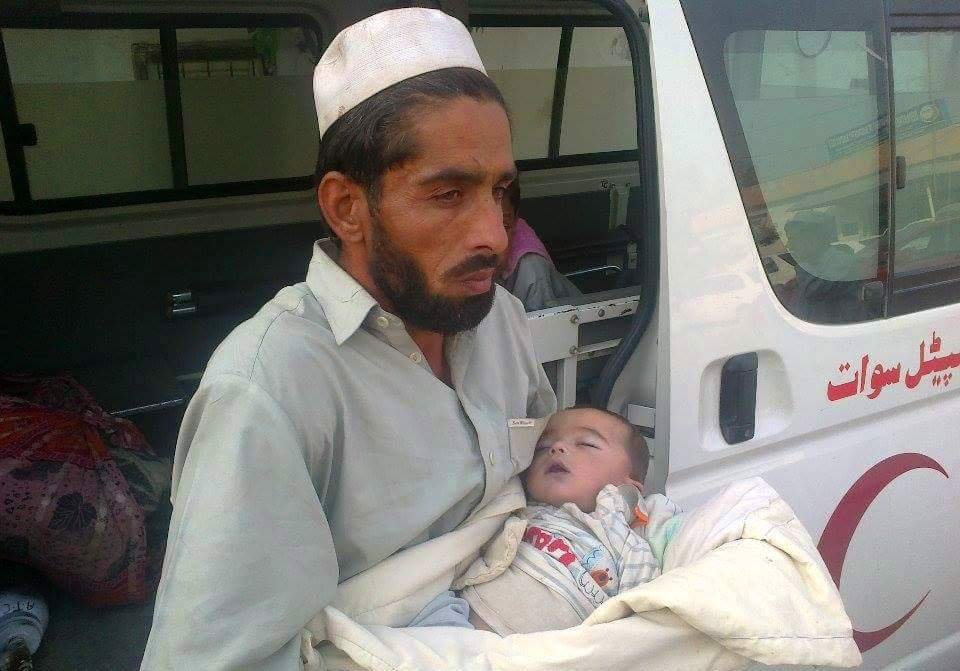By Fazal Khaliq
MINGORA: Climate change experts said that water sector was more vulnerable to climate change in terms of glaciations, surface runoff, potable water availability, severe events, dryness of lakes and springs in Swat and the surrounding regions.
They were speaking in stakeholders consultation meeting on disaster risk reduction and climate change issues organized by LASOONA and Welthungerhilfe here on Wednesday, attended by stakeholders, climate change experts, agriculture experts, civil society members, and community elders.
Presenting a study conducted in three districts; Swat, Shangla and Kohistan, Dr Saifullah Khan a climate change expert said that the annual as well as seasonal trends of water flow decreased throughout the series and would be more worst in the future.
“The annual flow of the Swat River shows a decline of -0.03 cubic m/sec (2003 to 2013), and Indus River of -2.1MAF, and the Ghurband River is -0.2 meter cube per second (2001-10),” he shared a finding.
He said that during the last 50 years 58% forests in Swat, 78% in Shangla, 61% in Kohistan decreased while 16% in Swat, 20% in Shangla and 20% water decreased in Kohistan district during the last 50 years which was an alarming situation.
He shared that earthquakes, floods, land sliding, snow avalanches, hailstorms, fire and epidemics (dengue, diarrhea etc) are the common hazards in the area.
“Majority of the people especially women, children and aged people are vulnerable to the identified hazards. People are mostly vulnerable to water borne diseases like dengue, Diarrhea,” he said, adding that mostly the water borne diseases are caused by the poor water systems, sanitation and water logging,” he shared.
He said that economy and food security of the study area was primarily based on agriculture, which was threaten due to high probability of the risks associated with Hazards.
He recommended that there was strong need of establishing early warning systems for the identified hazards and establishing mechanism of community based disaster risk reduction considering the elements of preparedness, mitigation and response.
Meteoroidal Department (PMD) Dr Mohammad Hanif said that Pakistan was in the top 10 most vulnerable countries in the 192 countries of the world while Swat district was among the top 10 worst affected districts in Pakistan.
“Khyber Pakhtunkhwa’ upper parts have 30 percent forests and are most important part in the country but unfortunately, rapid deforestation has caused high threats of climate change in the region,” he said.
The ruthless cutting of deforestations caused flash floods and frequent landslides. He said that all people needed to understand the global warming and climate change factors and must control the deforestation in the region.
The Agriculture University Peshawar professor Dr Inamullah briefed on climate change and food security and said that decrease in water ultimately decrease yields of different crops. He said to tackle climate change menace there must be an integrated approach of the stakeholders.
“The government should introduce climate change adaptation approaches in agriculture sector and the meteorologist stations should get accurate data and new crops and seeds should be introduced,” he suggested, adding that climate change science must be introduced in educational institutions.
Executive director LASOONA Azam Khan, earlier, welcomed all the participants of the meeting and stressed on raising awareness regarding climate change in the communities level.
Welthungerhilfe representative Zulfiqar Ahmad said that all should work collectively on climate change and it was the need of the day to share every information the participants learnt in the meeting be shared with other people.
The event’s chief guest Nazim district Shangla Niaz Ahmad Khan assured his district council’s full cooperation in tackling the climate change effects.





